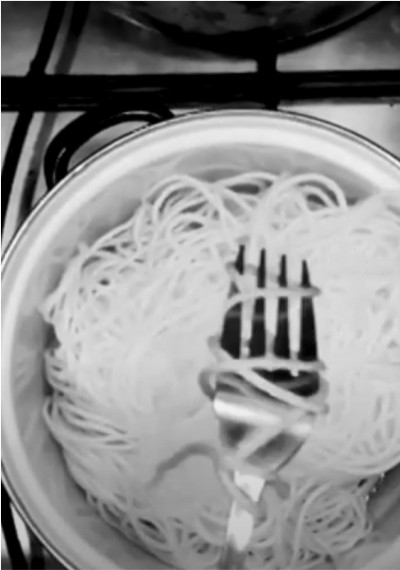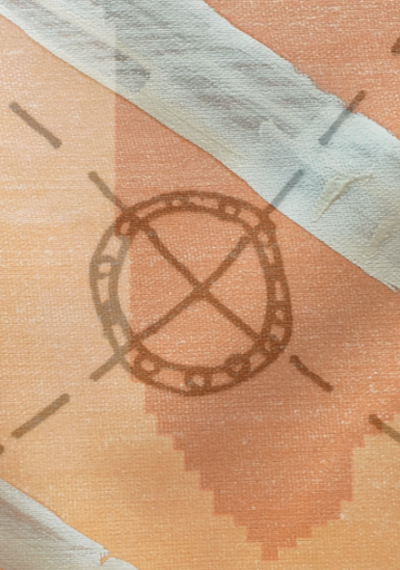Eglė Ganda Bogdanienė | Second Skin 2
16/12/2019 – 11/01/2020
Contemporary technologies are creating virtual reality experiences, as a result of which the material body is increasingly isolated from direct physical contact with another human being and various tactile surfaces.
The "Second Skin" project advocates a return to bodily sensations and an intuitive sensory experience. It is a series of artistic performances interpreting the issues of synergy between touch (tactile and haptic one) and skin – as a surface, layer, coating, membrane, living organ, or boundary between different physical and mental worlds.
The performative action involves felting upon human bodies in the hope that the felted fiber will contain cells of the individual body carrying an invisible, encoded biological identity of the person. The tactile, bodily and spiritual interactions between the author, action participants and audience achieve new kinds of artistic expression and unique primeval experiences. The project employs tactility as a means of expanding the perception of the artwork and the body itself in the context of contemporary art.
The plan is to build up a collection of "hybrid skins" / libraries / archives / museums / banks of the artists who have been creating the look of the 21st century Lithuania‘s culture, from which future technologies could reproduce the DNA of the Lithuanian culture makers of the present period.
International project "Kaunas Art 2018" featured a performance and discussion on the process of "artistic" touch with artist Robertas Antinis, professor Kęstutis Petrikonis, neuroscientist at Lithuanian University of Health, Rita Krikštopaitytė, Doctor of medicine, and Nijole Goštautaite Midttun, psychiatrist and psychotherapist.
VAA Textile gallery "Artifex" continues to develop the "Second Skin" project, and intends to carry out artistic actions involving felting on artists‘ bodies.
The exhibition intends to discuss the ways in which the effects of advanced contemporary technologies reduce the need for physicality, incorporate it into virtual reality, and weaken the body's relationship with the reality that it experiences. Paradoxically, the pursuit of innovative technologies to give life satisfaction and comfort is at odds with the effectiveness of oxytocin, a happiness mediator. Oxytocin is a hormone of touch – a neurotransmitter that increases in volume as a result of irritation of the physical body's points, and body touching. Oxytocin is often referred to as the "love hormone" or "touch chemical". It is associated with the positive aspects of the human psyche, and promotes human confidence, compassion, generosity, and communicability.
To further develop issues of tactility, authentic self and environmental experience, corporeality, sensory and identity, the project plans to cooperate with the Lithuanian Center for Physical Sciences and Technology, as well as apply forensic medicine methods, in order to search the felt for surviving cells and assess the fragmentation and decay of transmitted information. Each retrieval, transfer, and storage of information results in its degradation, decay, and change. The "second skin" felted during the artistic actions – which is basically woolen fiber mixed with the cells of the body – as if becomes a hybrid tissue, from which it is possible to symbolically regenerate a certain cultural period by using fragments of the identity of the culture makers. Is this enough to regenerate the tissue of a living culture? What kind of kinship is there between material and cultural identity?
The project was attended by painter Rūta Katiliūtė, graphic artist Jūratė Stauskaitė, media artist Žilvinas Lilas, animation artist Ilya Bereznickas, artist Nomeda Marčėnaitė, jeweller Marytė Dominaitė-Gurevičienė, choreographer Ninel Cam, actor Monika Bičiūnaitė, musicologist Loreta Žulkuvienė, artist/curator Arvydas Žalpys, painter Eglė Ridikaitė, graphic artist Marija Marcelionytė Paliukė, artist Konstantinas Bogdanas Jr., and artist Robertas Antinis.







